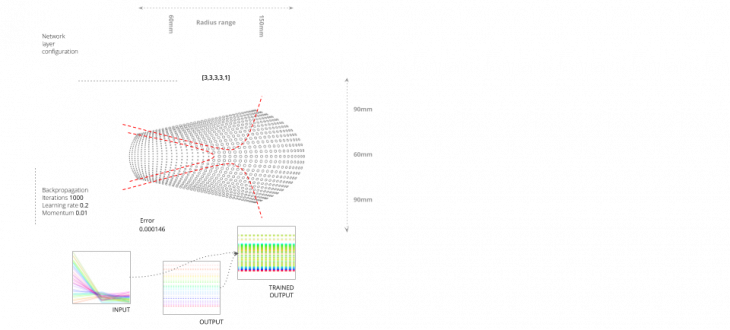It has been noticed that the pollution and greenhouse gas emissions have fallen across continents as countries try to contain the spread of the new Pandemic Covid-19.
In this context and in order to keep the global sustainable for heather life our designs should be influenced by environmental data to optimize healthy and comfortable building experience.
Sunlight is one of the main environmental aspects affecting our designs and life in general, and as sun follower flower, designing facades should follow the sun orientation for optimizing natural light in our buildings.
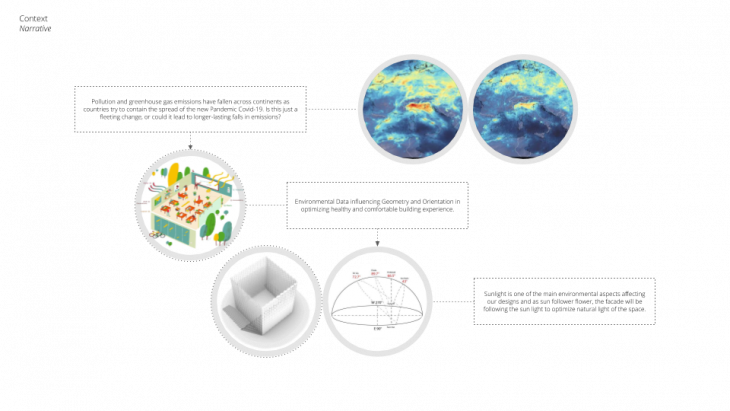 Neural Network role:
Neural Network role:
Optimizing the facade design according to the orientation toward sun position.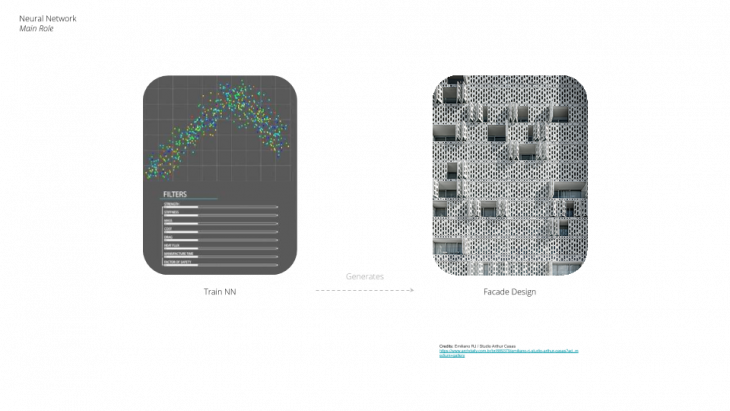
Workflow:
Training Concept: Implementation
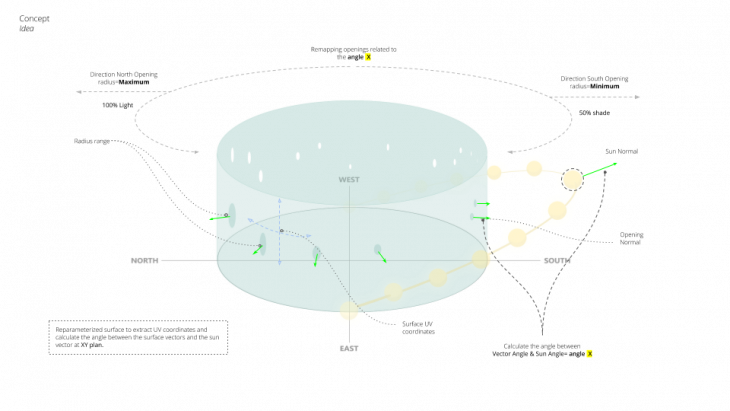 Input/Output data: Values
Input/Output data: Values
Using Owl library for data processing –a library written for machine learning-oriented data processing– by using 3 values for input Angle X* and UV surface coordinates and one output layer which is the range of Radius set for each opening.
*The angle x is the difference between the sun normal direction and the opening normal direction on XY plane.
Training Model:
Double surface to increase the number of guide openings used in training.
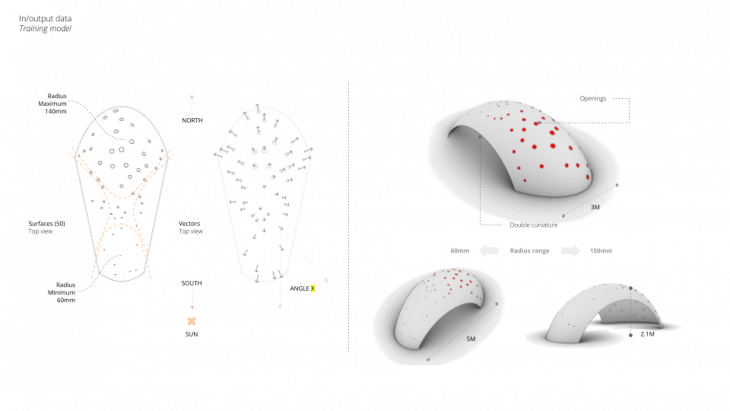
Training: iterations and filtering
Starting with 3 Network training layers (Input, Hidden layer, Output); then adding one hidden layer for each iteration to test the training output match at first.

There were a potential for each iteration, therefore each was trained again after increasing the number of Neurons per each hidden Layer gradually.

Here appeared fruitful willingness with using 3 hidden layers more than the others, For this it was decided to test range of values for the Backpropagation iteration, learning rate and Momentum effects in the training process. Beginning with 300 iteration, 0.01 learning rate and 0.001 momentum values, then upgrading with the same iteration value and changing learning rate to 0.2 and momentum to 0.01. At the same time these values were tested against 4 sets of Network layers and outputs were compared.
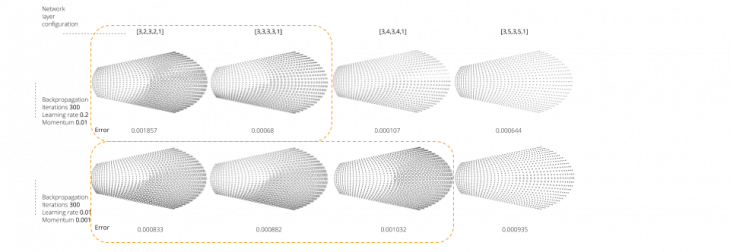
From the later process, 3 Network layer sets developed a potential to match the given output. As a result they were chosen to develop the training process by increasing the Backpropagation iteration to 600 and using same sets of values for learning rates and momentum.

Selection of trained outputs:
Last stage was to train the chosen iterations from the later process, 2 Network layer sets with the most potential to match the given output. Backpropagation iteration increased to 1000 while using the same two sets of values for learning rates and momentum.
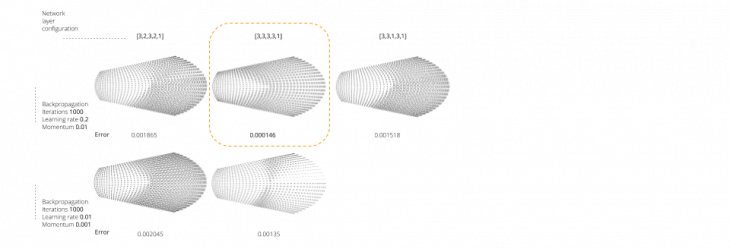
Selection of Final trained output:
Final Design Refine: Offset borders
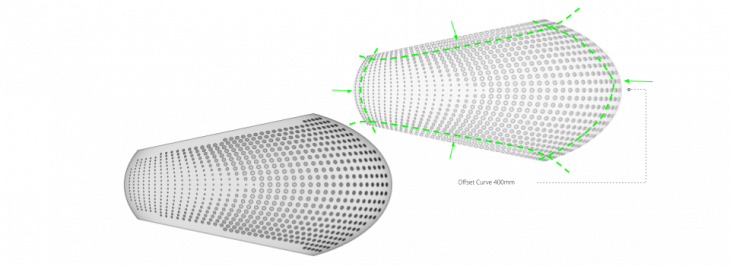
Final Render
As it appears, the end result of this experiment is just a shed, but the nutrient from the experiment is to use the sun’s direction to create an effect on the design vocabulary of the facades. Also, the trained result can be used to control facade openings (windows, exterior cladding, etc.)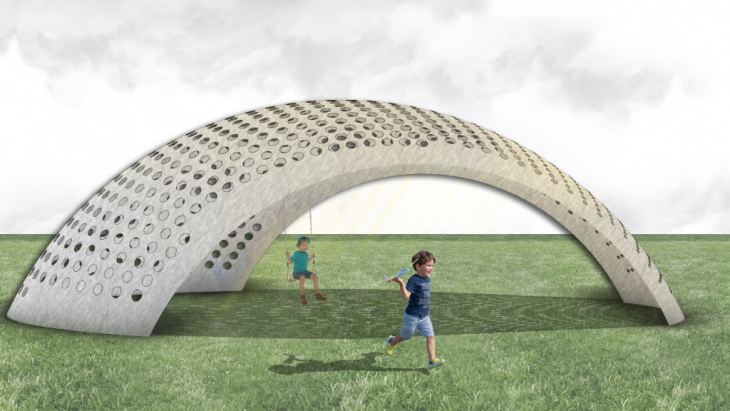
Sun Follower Facades is a project of IAAC, Institute for Advanced Architecture of Catalonia developed at Master in Robotics and Advanced Construction in 2019 by: Student: Abdelrahman Koura, Faculty: Mateusz Zwierzycki, Faculty assistant: Soroush Garivani

